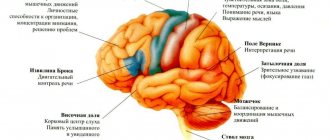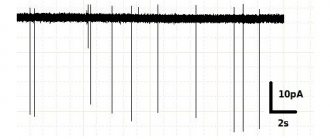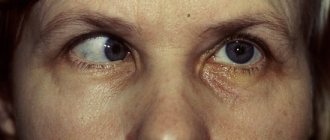According to the International Classification of Diseases, Tenth Revision, asthenovegetative syndrome (ICD-10 code F48.0) is defined as a functional disorder of the autonomic nervous system. This system regulates the functioning of all internal organs, endocrine and exocrine glands, blood and lymphatic vessels. Also, it plays a leading role in maintaining the constancy of the internal environment of the body (homeostasis).
The mechanism of development of asthenovegetative syndrome is a violation of the transport of impulses from nerve receptors to tissue cells. The clinical picture of this pathological condition of the nervous system is determined by which organ or organ system is subject to greater negative effects. As a result of this influence, the human body is simply unable to adequately respond to emerging stressful situations.
Most often, asthenovegetative syndrome occurs among representatives of the fair half of the population of our planet. This is directly related to the lability of the nervous system of women, which is less resistant to the effects of adverse external factors. Children who take on heavy mental and physical stress also often suffer from a similar pathological condition. However, under a certain set of specific circumstances, people of any gender, age and social status can be susceptible to developing the disease.
Specialists at the Center for Functional Disorders at the Yusupov Hospital treat various autonomic and affective disorders, including asthenovegetative syndrome. Using an integrated approach to diagnosis and treatment allows the clinic’s doctors to find the true causes of the disease. Honored doctors of the Russian Federation with the highest category work within the walls of the hospital, who are constantly improving in their field of activity. Each patient is provided with both professional medical and psychological assistance.
Asthenovegetative syndrome
A functional disorder of the autonomic nervous system, which is responsible for the proper functioning of internal organs, is called asthenovegetative syndrome. It occurs as a result of a disruption in the transmission of signals between the central nervous system and the peripheral nervous system - impulses to the tissues in this case reach sooner or later, and sometimes are reversed. This disease can be either independent or appear as a result of various pathologies, including bipolar disorders, schizophrenia, liver damage, etc. According to statistics, women are more susceptible to this disease; often astheno-vegetative syndrome occurs in children as a result of mental overload and emotional stress.
What is asthenic syndrome, asthenia?
Asthenic syndrome is a syndrome characterized by a state of mental irritable weakness, rapid depletion of nervous processes, unstable mood, impatience, decreased performance for prolonged physical activity and mental stress, intolerance to bright light, loud sound, strong smell, emotional lability, and sleep disturbances. The term " asthenic syndrome " comes from the Greek word "astheneia", which means "weakness, impotence". Asthenic syndrome has synonyms - chronic fatigue syndrome (CFS, CFS), asthenia , asthenic reaction , asthenic condition , asthenia of the nervous system .
Causes of asthenovegetative syndrome
Typically, this disease manifests itself after suffering psycho-emotional trauma, too much mental work, long-term infectious diseases, stress and everything that quickly depletes the body. The modern rhythm of life contributes to the increasingly frequent occurrence of this syndrome in people. Also among the external factors that influence:
- presence of traumatic brain injuries;
- strong psychological stress leading to stress, unfavorable environment at home and at work;
- constant lack of sleep;
- changes in work rhythms, time zones with large differences, climate, lack of vacations.
In addition, the following may serve as a trigger for the development of the disease:
- neurological diseases;
- cardiovascular diseases;
- disturbances in the functioning of the endocrine system.
Symptoms of the disease
Typically, the symptoms of asthenovegetative syndrome are characterized by a gradual increase, in very rare cases they can be expressed quickly and vividly. Since asthenia is translated from Greek as impotence, the very first clinical sign is considered to be fatigue. Then:
- performance decreases;
- absent-mindedness and lapses in short-term memory appear;
- it becomes difficult to concentrate on one object and formulate your thoughts;
- restlessness, anxiety, irritability appear;
- Possible disturbances in the functioning of the genital organs (sexual dysfunction).
In addition to this, patients may develop hypochondria, which results in constant worry about their health. And this is understandable, since they may also be bothered by: tachycardia, shortness of breath, severe headaches, digestive disorders, loss of appetite, severe sweating, cold feet. Later, tinnitus and urination problems may appear. But this is hardly worth allowing; it is better to consult a doctor much earlier.
Symptoms of chronic fatigue syndrome
Astheno-neurotic syndrome is one of those disorders that develop slowly and can go unnoticed for a long time. Its first symptoms can be so ordinary that a person usually does not attach any importance to them, writes them off as a sign of fatigue, and is especially in no hurry to make an appointment with a doctor. But over time, under the influence of external and internal factors, the disorder progresses and significantly changes a person’s life, which can no longer go unnoticed. But the main problem is often a strong reluctance to do anything to correct the situation.
Initially, chronic fatigue syndrome may manifest itself:
- causeless irritability - an attack of anger can be caused by any little thing to which previously the same person would not have paid the slightest attention;
- increased fatigue;
- deterioration of immunity, as a result of which colds and other infectious diseases occur much more often.
In children, astheno-neurotic syndrome manifests itself much more clearly than in adults. Its occurrence may be indicated by:
- sudden changes in mood;
- loss of appetite up to complete refusal to eat;
- the appearance of bad habits, for example, biting nails, sucking fingers, etc.;
- the appearance of uncontrollable attacks of aggression, taking out anger on toys, younger brothers or sisters;
- increased moodiness, frequent crying;
- fatigue;
- headaches localized in different parts of the head;
- difficulties communicating with peers;
- loss of interest in studying, decreased performance.
Typically, people seek medical help only when the problem has gone too far and there is no way to cope with the depressive state on their own. At the same time, it is usually not the patient himself who makes an appointment with a doctor, but his relatives and friends, since he completely lacks the desire to do anything to improve his well-being.
In general, all symptoms of astheno-neurotic syndrome can be divided into 3 large groups:
- Physical – pain around the head that does not go away after rest, fatigue, increased blood pressure, problems with falling asleep and waking up, neurotic nature discomfort in the chest area like heart pain, enlarged lymph nodes, possible weight loss, fever and body aches, tendency to motion sickness in transport.
- Emotional – irritability, loss of interest in life and desires, pessimistic attitude, feeling of complete powerlessness, high level of anxiety, loss of sense of humor.
- Social – the emergence of addiction to alcohol or drugs in attempts to cope with the problems that have piled up, the decision to change place of residence, work, divorce, decreased need and desire to communicate with other people, including loved ones.
Stages
During the astheno-neurotic syndrome, 3 stages are distinguished, which successively replace each other in the absence of timely intervention. At the first or hypersthenic stage, it is extremely rare that the patient himself or his relatives notice the presence of signs of deviations from the norm. Constantly increasing fatigue and irritability are mistaken for overwork and a temporary phenomenon.
Over time, a person begins to lose control over behavior, as a result of which he may suddenly laugh or cry, but more often he reacts even to minor stimuli by screaming. Often there is a decrease in memory, the ability to concentrate, insomnia, headaches, weakness and a sharp decline in working ability. At this stage, chronic fatigue syndrome or neurasthenia is almost never diagnosed. Therefore, it smoothly moves into the second stage of development.
At the 2nd stage, excessive emotionality appears and physical symptoms of the pathology such as headaches, constant fatigue, and a pronounced decrease in performance appear. People with astheno-neurotic syndrome begin to experience problems with sleep: they are tormented by insomnia and constant drowsiness. All the time there is a strong desire to lie down and rest. Falling asleep, the patient may wake up from a nightmare or a surging feeling of anxiety, and rest, even a long one, does not bring the desired feeling of vigor and freshness. Every morning a person struggles with himself, getting out of bed no less tired than when he went to bed. At the same time, he becomes whiny and touchy; any word even accidentally dropped can seriously hurt him, which causes difficulties when communicating with other people.
At the third or hyposthenic stage, signs of pathological changes already become obvious. Constant fatigue and anxiety are replaced by absolute indifference to everything that happens around. The patient loses interest in news from the outside world and within the family, he is no longer interested in films and entertainment, he tries to isolate himself from society and avoids communicating with other people. As a result, prolonged depression sets in, which can only be overcome with the help of adequate medical care.
Consequences
If you ignore the signs of neurasthenia and do not carry out appropriate treatment for the situation, over time the disease can have quite dangerous consequences for physical health. It can lead not only to chronic headaches, eating disorders, the development of phobias and decreased libido, but also to:
- stroke;
- heart attack;
- hormonal disorders;
- exacerbation of chronic diseases, etc.
In addition, we must not forget that prolonged depression is fraught with persistent thoughts of suicide. Therefore, astheno-neurotic syndrome can have very serious consequences, which does not allow it to be ignored or treated negligently.
Chronic fatigue syndrome is no less dangerous for children. Due to the incomplete formation of their body, it leads to hormonal imbalances, which can result in thyroid diseases, developmental disorders, as well as diabetes, and subsequently reproductive dysfunction.
Diagnostics
Various methods are used to make an accurate diagnosis. To exclude pathologies of other organs, laboratory tests (general blood and urine analysis, blood biochemistry), an electrocardiogram and an electroencephalogram of the brain are prescribed. To identify deviations, a psychologist conducts a pathopsychological examination. To exclude serious mental disorders (schizophrenia, bipolar disorder), a neurophysiological test system is used. Sometimes MRI is used as an additional diagnosis.
Prevention of asthenia
Sarklinik has developed an effective program “ Prevention of asthenia ”, which allows you to avoid future exhaustion of the nervous system. A healthy nervous system is a reality today. The peculiarity of the disease is that the symptoms slowly, gradually, but clearly increase, and the condition worsens sharply. Do not expect dangerous complications of asthenia, asthenic syndrome; contact Sarclinic for timely treatment.
Sign up for a consultation. They have contraindications. Specialist consultation is required.
Photo: (©) Bds | Dreamstime.com \ Dreamstock.ru The people depicted in the photo are models, do not suffer from the diseases described and/or all similarities are excluded.
Related posts:
Phobia, fear, how to get rid of fear, how to overcome, treat and overcome fear, treatment in Saratov
Brain stroke: ischemic, hemorrhagic, treatment, rehabilitation, consequences
Occipital neuralgia: symptoms, treatment in Saratov
Transient ischemic attack: symptoms, treatment of the brain
Polyneuritis, treatment of polyneuritis, alcoholic polyneuritis, polyradiculoneuritis
Comments ()
Treatment of asthenovegetative syndrome
If asthenovegetative syndrome is detected in the early stages, then in this case you can do without medication treatment; it will be enough to give up heavy loads of any nature, normalize your lifestyle and diet, and sometimes just rest. In more complex cases, complex therapy is used, which includes: taking vitamins, massage and physical therapy, electrophoresis, baths with soothing essential oils. Neurometabolic drugs and herbal nootropics may also be prescribed.
In the most severe cases, medication cannot be avoided. Antidepressants (antipsychotics and antipsychotics) will help correct the patient’s condition. An individual approach is very important, taking into account age (a child and an adult have different nervous systems) and the general condition of the body. With the level of modern medicine, the development of the disease can be easily minimized.
Asthenic syndrome in adults: symptoms, signs, manifestations of asthenia
What is the clinic for asthenic syndrome in adults, men and women? Asthenic syndrome in adults (men, women), in adolescents (boys, girls) has typical symptoms : irritability, restlessness, sleep disturbance, intolerance to loud sound, fatigue, mood swings, bad mood (low, depressed mood), poor mental tolerance and physical activity, fatigue, decreased self-control, intolerance to bright light, impatience, inappropriate behavior, intolerance to strong odors, poor willpower, irritability, excitability, melancholy, apathy. The person feels tired, but often continues to do something. Lethargy can occur without exercise and does not go away even after rest. Sometimes in old age there is a decrease in memory, headache, fatigue from life, mentism (involuntary flow of thoughts), tearfulness, increased tearfulness, hyperesthesia, tearfulness (unreasonable crying for any minor reason), whims (moody). They are also characterized by “harassing”, “harassing” relatives, dissatisfaction with work, life, financial condition, and people around them.
Frequently asked questions about asthenovegetative syndrome
How dangerous is asthenovegetative syndrome?
Asthenovegetative syndrome itself is not dangerous; the diseases it indicates, for example, liver dysfunction or the presence of traumatic brain injury, can be dangerous.
How long to treat asthenovegetative syndrome?
Depends on the degree of the disease - the earlier this syndrome is detected, the less time it will take to recover.
Which doctor treats asthenovegetative syndrome?
Treatment is carried out by a neurologist or psychotherapist. In the case of primary diseases, the participation of a specialist in a specific field is necessary.









